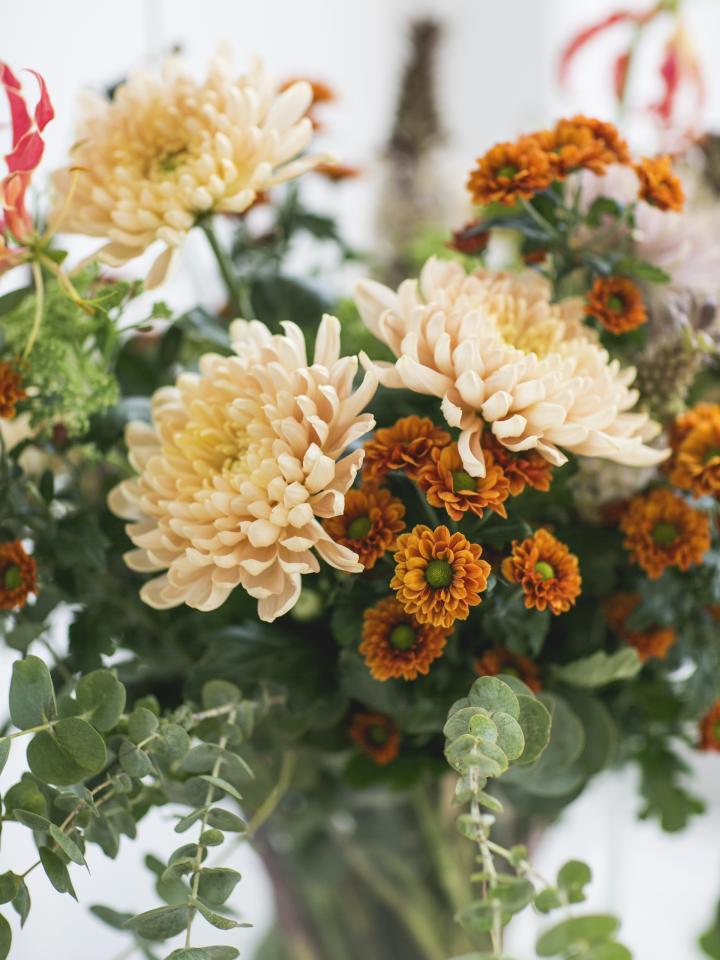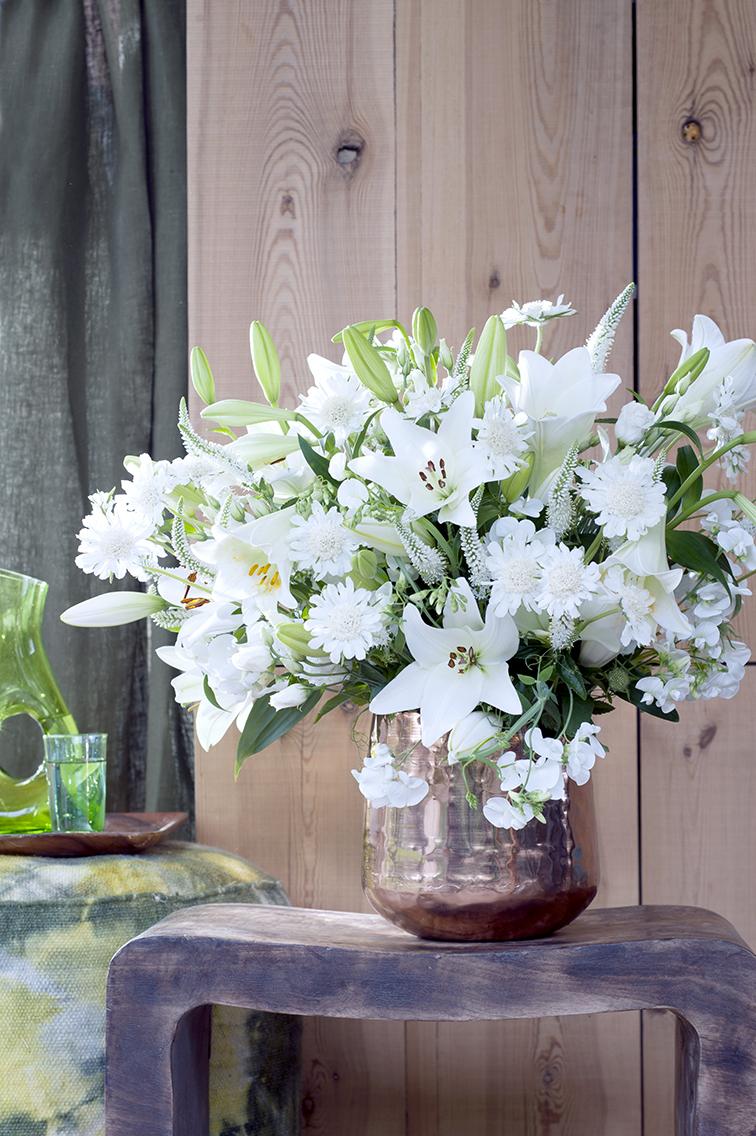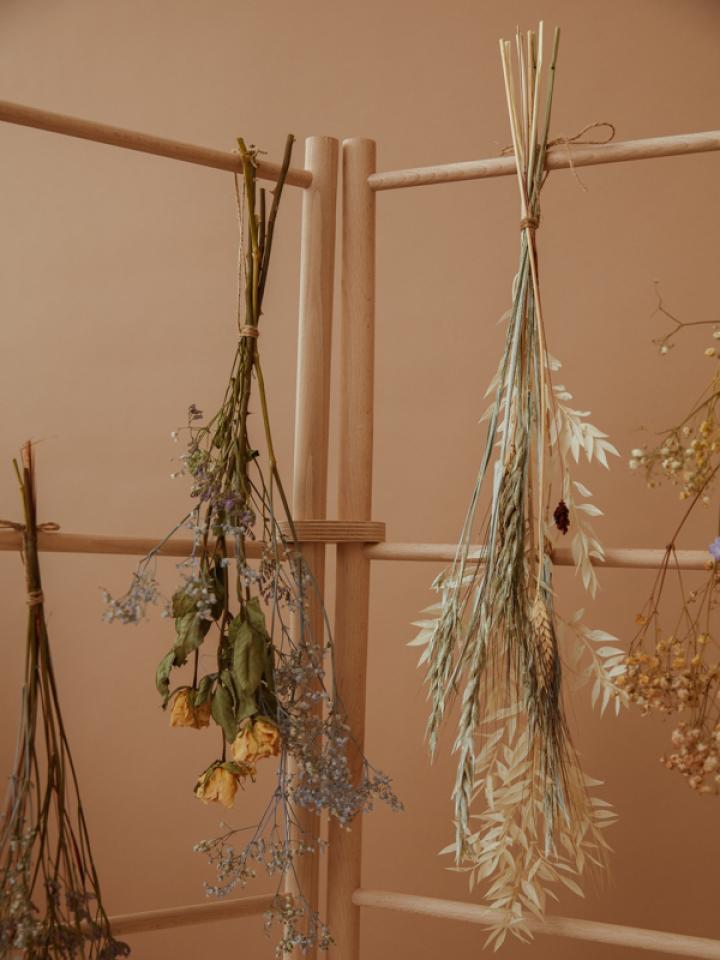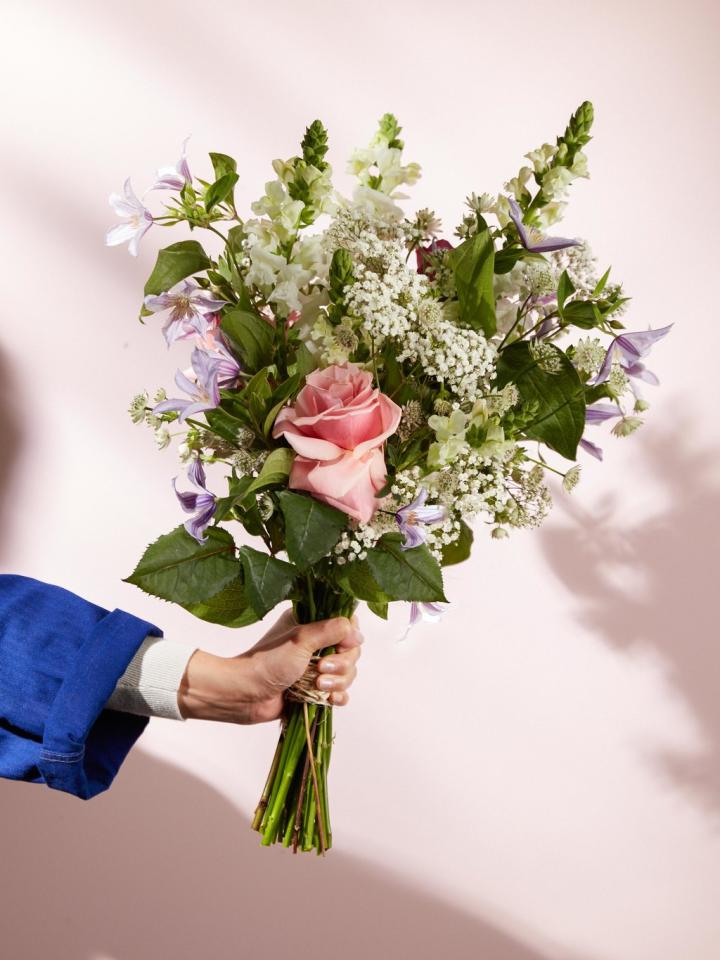What kind of flowers trigger hay fever symptoms?
When choosing flowers for someone with hay fever, you should keep in mind that there are two different varieties to be aware of: those that spread their pollen via the wind (wind flowers) and those that spread their pollen via insects (insect flowers).
Wind flowers often disperse large quantities of pollen and the pollen itself is small, light and easily floats on the air. Insect flowers rely on insects to disperse their pollen and the pollen itself is often larger and stickier pollen. As a result, insect flowers tend to cause fewer allergic reactions than wind flowers.
It's thus better to choose low-pollen flowers (see our list below for inspiration) and flowers that are pollinated by insects.
The best flowers for hay fever
Fortunately, there are many flowers out there that are low in pollen. You can confidently gift these flowers to people with hay fever:
- Rose
- Peony
- Carnation
- Gypsophila
- Lisianthus
- Gerbera
- Hydrangea
- Snapdragon
- Iris
- Clematis
- Tulip
- Common Snapdragon
- Yarrow
- Orchid

The worst flowers for hay fever
The flowers below have relatively high levels of pollen and are best avoided if you suffer from hay fever:

Scented flowers and hay fever
Strongly scented flowers (such as Lily, Jasmine and Hyacinth) can cause symptoms in people with allergies, including hay fever. The smell of the flowers is caused by certain oils or substances that are present, even if the flowers have little pollen. Those fragrances can spread through the air and cause symptoms.

How to remove pollen from flowers and reduce hay fever symptoms when around flowers
If you're the recipient of a bouquet that's triggering your hay fever, it would be a shame to throw them away. Here are some tips on reducing the amount flowers affect you:
- Wash your hands and face immediately after arranging the flowers or after moving the vase.
- Place the bouquet outside and, where possible, cut the pollen stamens from the flowers. This works well with Lilies and Freesias, for example.
- Place the bouquet in a well-ventilated room with less traffic.
- Change the vase water regularly to prevent worse symptoms. Pollen and bacteria can get into the water, which can aggravate allergic reactions.
- Dried flowers usually cause fewer complaints than fresh flowers. Place your bouquet in a sheltered, out-of-the-way spot to dry and enjoy it when there's no pollen left to irritate.

More floral gifting inspiration
Check out these simple tips and rules to help cut flowers last as long as possible. Get inspired by these seven bouquets which will help you to express your love, and these flowers ideal for celebrating milestones and expressing pride.
*Disclaimer: this article and lists of flowers are not comprehensive. Just because a flower is not on this list does not mean it cannot cause an allergic reaction. Always consult a doctor if you're concerned.





